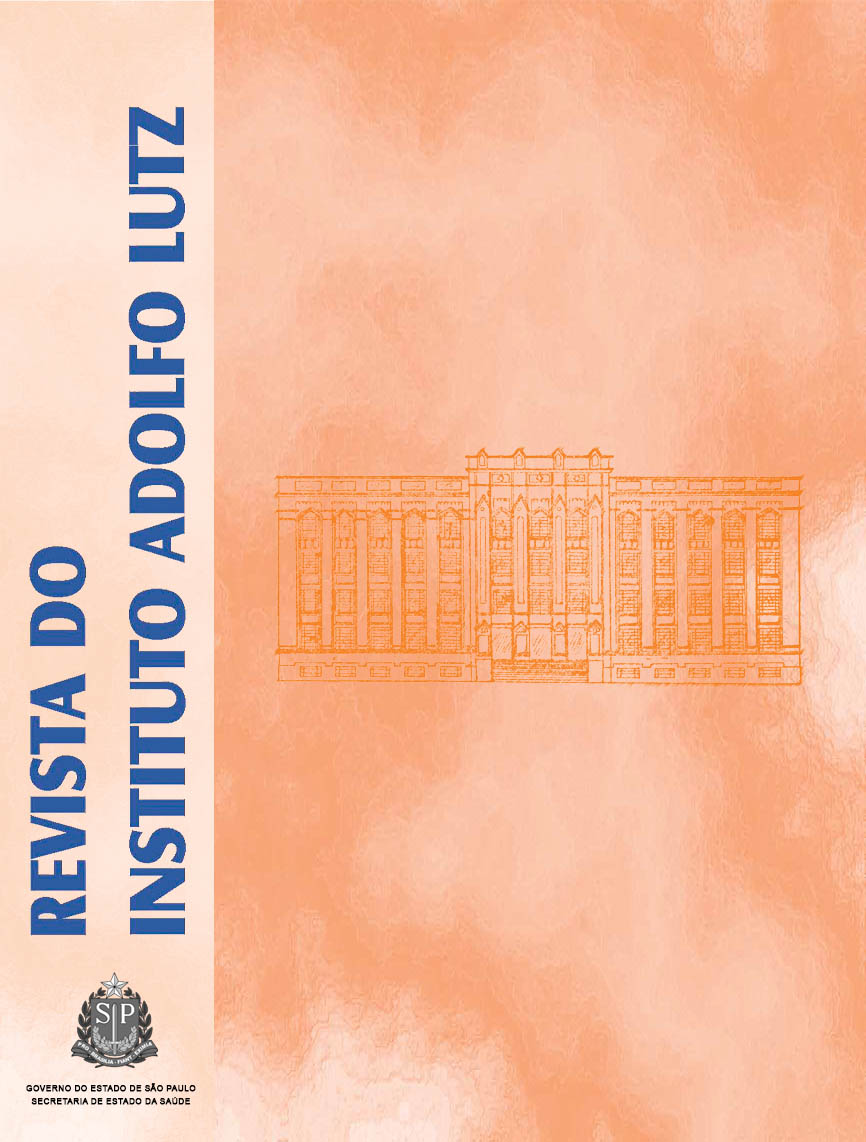Abstract
The aim of this study was to assess the quality of water from groundwater located in 50 public schools of the Ibiúna municipality, state of São Paulo, regarding to microbiological and physicochemical parameters. Secondly, the study aimed to investigate on risk factors for environmental contamination, and to propose the intervention measures. This study was carried out in three stages: assessment of risk factors, water microbiological and physicochemical analyses. High contamination with total coliforms at levels above 100 colony forming units(CFU) was revealed in 90% of water samples, and termotolerants in 82% of analyzed specimens (p< 0.001). Regarding to physicochemical parameters, alterations in the aspect, color, turbidity, and iron content were revealed in three, four, and one samples, respectively. Concerning the risk factors, the most representative were of groundwater safe-keeping, information about water quality, and your treatment (p< 0.001).References
1. Pontes CAA, Schramm FR. Bioética da proteção e papel do Estado: problemas morais no acesso desigual à água potável. Cad Saúde Pública, 2004; 20:5,1319-27.
2. Portaria 518 de 25/03/2004, Ministério da Saúde.
3 . Riedal G, Controle Sanitário dos Alimentos. 2 ed. São Paulo: Atheneu,1992
4 . Pedley HG, Barrett S, Nalubega M, Johalk MK. Risk factors contributingto microbiological contamination of shallow groundwater in Kampala, Uganda. Water Res, 2003 Aug. 37(14): 3421-9.
5 . Soto FRMS, Fonseca YSK, Antunes DV, Risseto, MR, Amaku M, Arini,MLB. Avaliação microbiológica da água de abastecimento público em escolas no município de Ibiúna - SP: estudo comparativo da qualidadeda água no cavalete e pós-cavalete. Rev Inst Adolfo Lutz. 2005,64(1):128-31.
6 . Vigilância Epidemiológica Municipal, Ibiúna, SP, Estatísticas, 2006.
7 . Stukel TA, Greenberg ER, Dain BJ, Reed FC, Jacobs NJ. A longitudinal study of rainfall and coliform contamination in small community drinking water supplies. Environ Sci Technol. 1990;24:571-5.
8 . Craun GF. Causes of waterborne diseases in the United States. Water Sci Technol. 1991; 24:17-20.
9 . Centro de Vigilância Epidemiológica, CVE, SP, Estatísticas de doenças e surtos de veiculação hídrica no ano de 2003, 2006.
10. Roteiro de Inspeção em Vigilância Sanitária, Secretaria de Vigilância em Saúde- SVS, Ministério da Saúde
11. American Public Health Association-Apha. Standard Methods for the Examination of Water and Wasterwater. 20Ú ed. 1998.
12. American Public Health Association (APHA) Standard Methods for Examination of Water and Wastewater, 19th , Ed. Washington, 1995.
13. Instituto Adolfo Lutz, Normas Analíticas do Instituto Adolfo Lutz: Métodos Químicos e Físicos para Análise de Alimentos, 3ª ed São Paulo,1985.
14. Zar JH, Bistatistical analysis. 4. ed. Upper Saddle River: Prentice Hall,1999, 663 p.
15. Amaral LA, Filho AN, Rossi Júnior OD, Ferreira FLA, Barros LSSB. Água de consumo humano como fator de risco à saúde em propriedades rurais. Ver Saúde Pública. 2003;37:4.
16. Aguila, PS, Roque OCC, Miranda CAS, Ferreira AP. Avaliação da qualidade de água para abastecimento público do Município de Nova Iguaçu. Cad Saúde Pública. 2000; 16:(3):791-98.
17. Isaac- Marquez AP, Lesava Davila CM, Kupech RP, Tamay Segovia P.Calidad sanitaria de los seministros de água para consumo humano em Campeche, Salud Publica Méx.1994; 36:655-61.
18. Brooks GF, Butel JS, Morse AS. Microbiologia médica. 20a ed. Rio deJaneiro: Guanabara Koogan; 1998. 175-84.
19. Nanan D, White F, Azam I, Afsar H, Hozhabri S. Evaluation ofwater, sanitation, and hygiene education intervention on diarrhoeain northern Pakistan. Bull World Health Organization.2003; 81:160-5.
20. Adriaens P, Goovaerts P, Skerlos S, Edwards E, Egli T. Intelligent infrastructure for sustainable potable water: a round for emerging transnational research and technology development needs. Biotechnol Adv.2003; 22:119-34.
21. Gazzinelli, A. Souza MCC, Nascimento, I. Utilização doméstica de água em comunidade rural de Minas Gerais e sua relação com fatoressócio econômicos. Cad. Saúde Pública.1998; 14(2):265-77.
22. Spalding RF, Exner, ME. Occurrence of Nitrate in Groundwater-AReview Journal of Environmental Quality JEVQAA, 1993, 22:3, 392-402.
23. Mídio AF, Martins DI. Toxicologia de Alimentos, Varela Editora e Livraria Ltda, São Paulo 2000, p. 49.
24. Calvo MCM, 1996. Situação da Fluoretação de Águas de Abastecimento Público no Estado de São Paulo – Brasil. São Paulo. Dissertação de Mestrado, São Paulo: Departamento de Prática de Saúde Pública, Universidade de São Paulo.
25. Clarkson JJ, Barmes D, Hardwick K, Richardson LM. International Collaborative Research on Fluoride. J Dental Res. 2000; 79:893-904.
26. Maia LC, Valença AM, Soares EL. et al. Controle operacional da fluoretação da água de Niterói, Rio de Janeiro, Brasil. Cad Saúde Pública.2003; 19(1):61-7.
27. Cury JA. Fluoretação da água: Benefícios, riscos e sugestões. Revista de Odontologia do Brasil Central. 1992; 2:32-3.
28. Narvai, PC. 2001. Vigilância Sanitária da Fluoretação das Águas de Abastecimento Público no Município de São Paulo, Brasil, no Período 1990-1999. Tese de Livre Docência. São Paulo: Faculdade de Saúde Pública, Universidade de São Paulo.
29. Sá, LLC. Jesus IM. Santos ECO et. al. Qualidade microbiológica da água para consumo humano em duas áreas contempladas com intervenções de saneamento- Belém do Pará, Brasil. Epidemiologia e Serviços de Saúde, 2005; 14(3): 171-180.

This work is licensed under a Creative Commons Attribution 4.0 International License.
Copyright (c) 2006 Instituto Adolfo Lutz Journal
